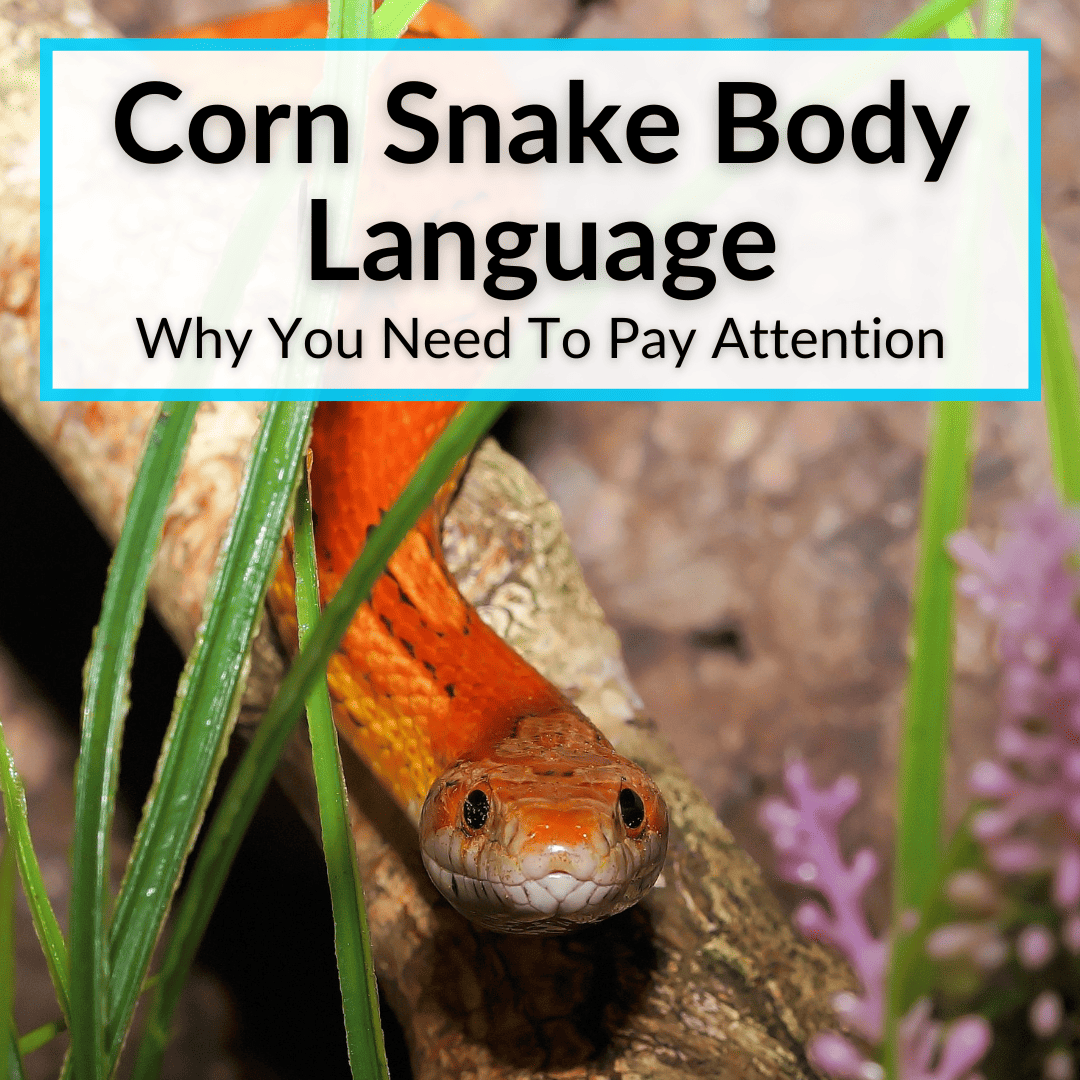
But they do have likes and dislikes.
And it is important to understand what your pet snake enjoys and hates.
That will help you become a better snake owner.
How do you know what your snake likes and hates? Corn snake body language will tell you.
Corn snakes adopt various different body positions. And these positions can give you clues as to what your snake is feeling.
Keep reading to learn all about the body language of your corn snake and how to interpret it. This will help you take better care of your pet and should also help the two of you bond better.
Table of Contents
- 1 Corn Snake Body Language
- 2 Reading Corn Snake Body Language: Final Thoughts
Corn Snake Body Language
It is important to assess your corn snake’s body language to understand if it is saying ‘yes’ or ‘no’ to being handled. By studying your pet’s body language, you can assess if it is healthy, relaxed, and happy or stressed, agitated, sick, or angry.
A corn snake that is stretched out comfortably in the open, alert but calmly breathing and moving, is generally happy and relaxed. Let’s take a closer look at various body positions and what they mean.
Meaning Behind Different Corn Snake Body Positions
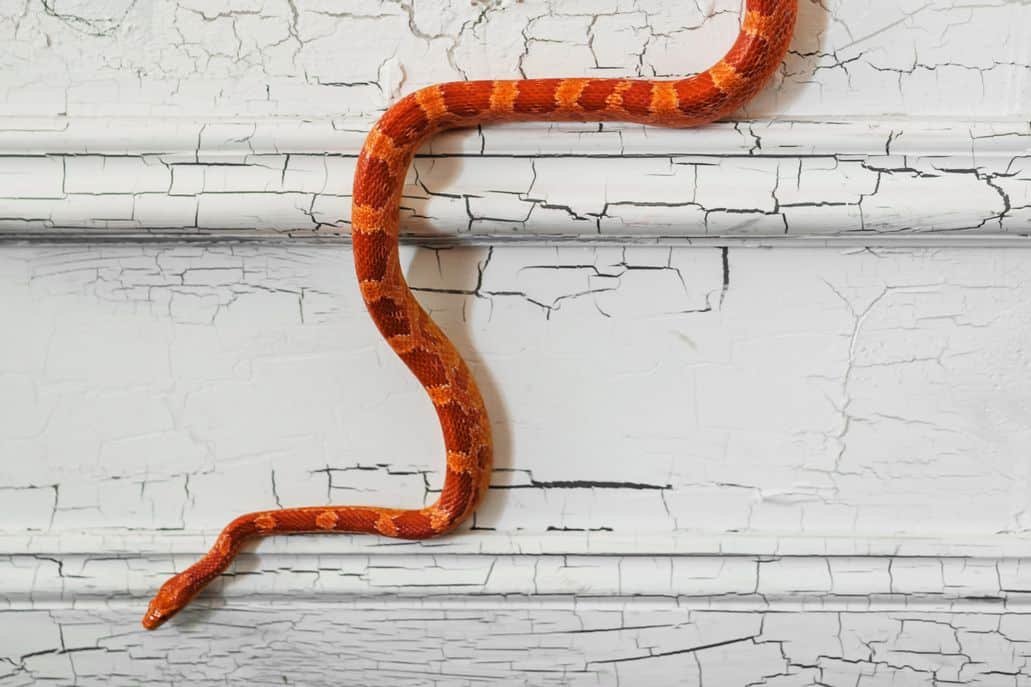
It is quite difficult to understand exactly what a corn snake is trying to indicate. After all, there is not much research on the topic.
Until then, owners may want to arrive at their own conclusions, while also taking their snake’s personality into account.
In general, the following corn snake positions and body language movements could help you assess whether your pet is happy and relaxed or stressed.
Coiled Or Curled Up
If your corn snake is curled up or coiled, there is a chance that it is feeling insecure and stressed. However, the coiled position could also indicate that the snake is relaxed and basking.
If the snake is keeping its head hidden in its coils, then it definitely wants to be left alone. It may even be mildly angry or upset.
Coiling is a ‘safe position’ for a snake. It helps the snake protect its vital organs. The position also provides warmth.
A corn snake will usually coil up if it feels there is a threat nearby. It may be best not to handle your coiled or curled up snake.
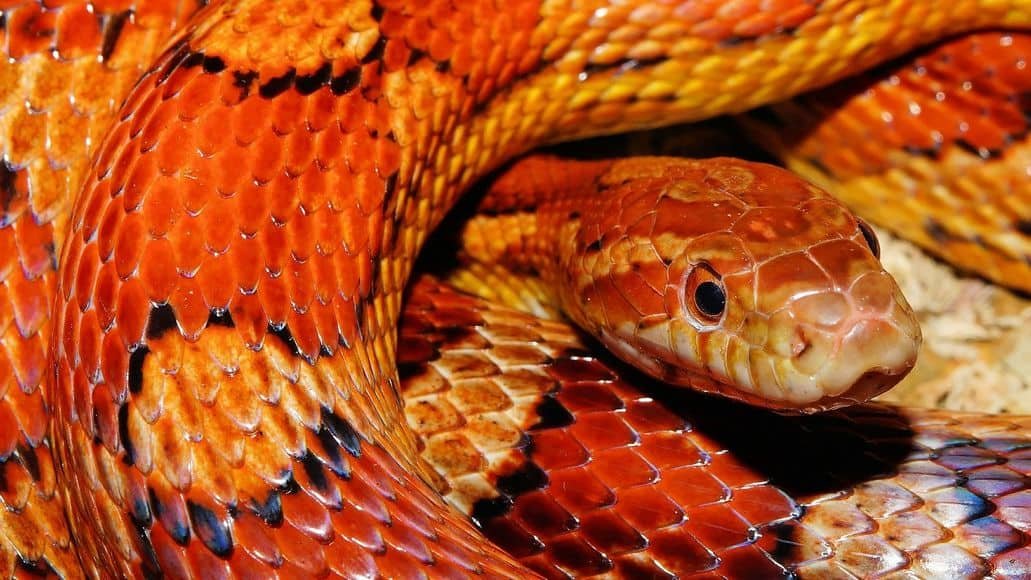
Corn snakes also brumate and sleep in the coiled or curled position. During brumation, you must avoid handling your corn snake completely.
Head Retracted And Body In An ‘S’ Position
Corn snakes assume the S-pose when they feel threatened or if they are about to strike. Your snake might also hiss as if to say: “stay away from me.” Please do not handle your corn snake when it is in this position.
Stretched Out With Head Raised Slightly And Mouth Open
This is also a ‘back off or I will bite’ position. Your corn snake is warning you to stay away. Do not handle your pet; let it just be.
Agitated, Tail Moving, Head Raised
This is another defensive ‘I will bite’ stance from your corn snake. It might be moving or rattling its tail to indicate its agitation. Its head will be flat but ready to strike. Do not handle your agitated, angry corn snake.
Low To Ground, Relaxed

In this position, your corn snake could be either stretched out or coiled up, but it is low to the ground with its tail relaxed. This is a good time to handle your corn snake slowly.
What Is Normal Behavior For A Corn Snake?
Here are some normal behaviors seen in this snake species.
They Are Good Escape Artists
Corn snakes are smart and curious creatures. They can easily find openings or exit points in the enclosures from which to escape. Therefore, you must take all precautions to secure your pet’s enclosure.
You should also provide your corn snake with climbing toys to help keep it happy. Finally, it is a good idea to know in advance how to find a lost snake. That way you don’t have to scramble to learn when your snake is already missing.
They Like Hiding And Digging
Corn snakes also like to hide. They are crepuscular creatures that sleep during the day and only come out after dusk. Corn snakes also prefer hiding or burrowing during brumation when they want to feel warm and protected.
Like all snakes, corn snakes are cold-blooded and cannot regulate their body temperatures. Hiding or burrowing helps them stay warm, so you need to provide several hiding areas and a comfortable substrate for them to burrow into.
They Like Being Handled

Corn snakes make excellent beginner pets for people new to snake keeping. They are generally docile and mild mannered and their body language is open and easy to decipher.
You can easily tell when your corn snake is happy and relaxed. Corn snakes generally tolerate being handled and are quite friendly.
With regular handling, they get used to your body warmth and will appreciate being held. They may even cuddle up close to your body.
They Need Basking Areas
Another normal behavior of corn snakes is their need to bask. Basking helps them regulate their body temperature. You need to provide a basking area in the enclosure with a temperature between 88° and 90° F.
They Need Baths
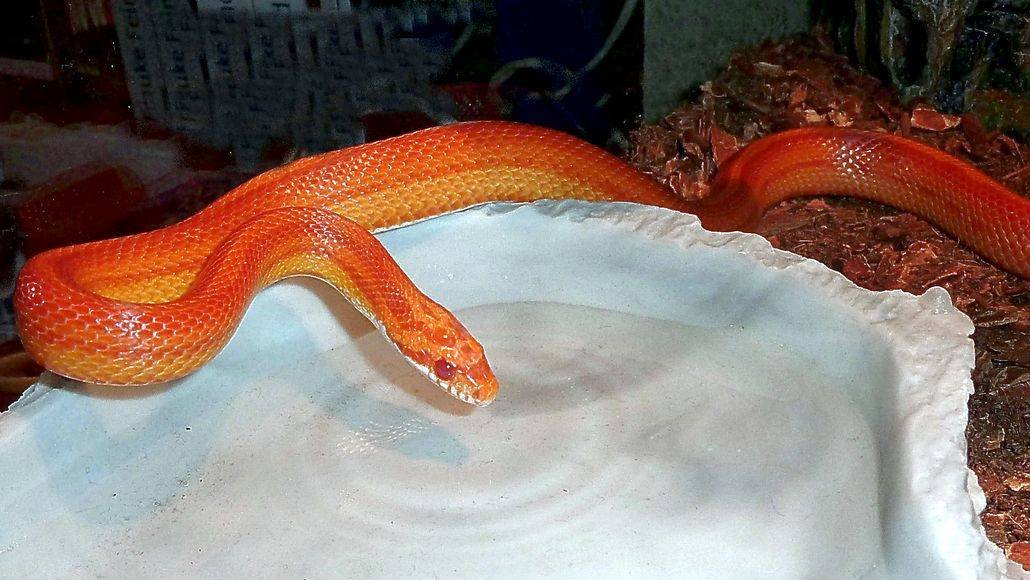
Corn snakes like soaking in their water bowls, especially in the warmer months. They also appreciate a good soak right before they shed, because the soaking action helps their skin come off faster.
How Does A Corn Snake Communicate?
Corn snakes are generally solitary animals and they don’t need to communicate with others of their kind. The same goes for other snake species. The only exception to this is during mating season.
How do snakes communicate with each other when they are ready to mate? When they are ready, they sniff the air to find potential mates. Their bodies also release pheromones, which help them attract their mates.
Like all snake species, corn snakes flick their tongues to get vital information from the air. The action helps them get information about their predators, prey, mates, etc.
Corn snakes do not hear as well as humans do. They can only hear a portion of the sounds we hear.
Do Corn Snakes Have Personalities?
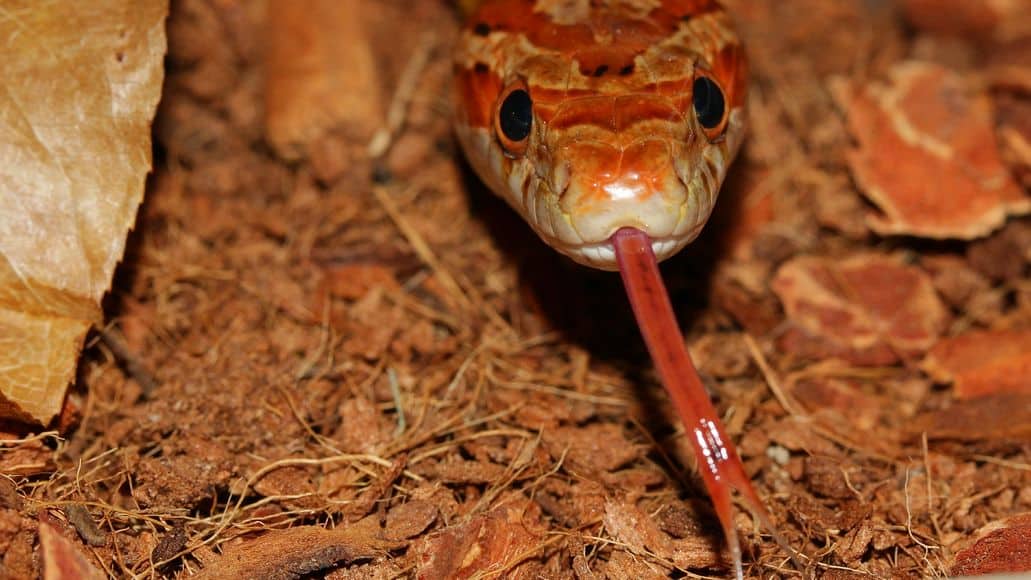
Many corn snake owners will vouch for the fact that their pets have distinct personalities. They respond differently to different people and even recognize their owners.
Each corn snake has unique and distinct behavioral patterns and temperaments. Some tend to bite more than others, while others may be friendlier.
They also have likes and dislikes and may not hesitate to let you know. For example, some corn snakes are skittish around strangers. Others may appreciate being handled a lot more than other snakes. Some are simply shy and spend most of their time hiding in their nest boxes or burrows.
How To Know If A Corn Snake Is Stressed?
The following signs could indicate that a corn snake is stressed
- Coiling around tightly
- Avoiding food; regurgitating eaten food
- Weight loss
- Rubbing their bodies (heads and noses) on objects in the tank
- S-shape position – ready to strike
- Hissing
- Lifting or rattling their tails
- Attempting to escape
- Defecating or urinating when held
- Not flicking out the tongue
How Do Corn Snakes Show Affection?
Corn snakes are capable of forming positive associations with their owners and may even show something akin to affection during their interactions.

A happy corn snake will be relaxed when it is handled and might even rub its head against your hand or body.
It may even cuddle up with you to absorb your body warmth. Generally speaking, though, reptiles do not have evolved brains. Any form of affection or cuddling is mainly for body heat since these cold blooded creatures cannot regulate their body temperature.
Reading Corn Snake Body Language: Final Thoughts
All snakes are different. What one snake likes, another may hate. That is why we can’t simply make a list of things corn snakes like or dislike.
You’ll have to figure our for yourself what your snake enjoys. And learning to read corn snake body language will help you do just that.
Hughes says
I do not agree with you about snakes not having emotions. I have had snakes for almost 70 years and they do feel emotions. Some snakes seem affectionate more than just looking for warmth. Some snakes are more intelligent than others just like humans. They have people they do not like clearly.